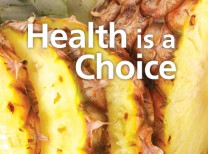Over the past 15 years, poor nutrition and obesity of our country’s youth has become a real health concern.
Multiple studies estimate that 40 percent of all youth ages 6-17 skip breakfast and snack all day. Of these, 50 percent are middle school students, while 36 percent are in high school. 26 percent skip meals twice a day and 64 percent once a day. Reasons stated include lack of time (43%), no appetite (29%), and 28 percent state no reason at all. Add this to the fact that high schools only recommend physical education for ninth graders, it’s no wonder that one in six U.S. children is obese–up three times the rate in the 1970s.
Whether economics, laziness or poor education are to blame, the facts are that this current generation is in far worse shape than the previous one. With diabetes, cardiovascular disease and cancer as leading causes of death, it is estimated that this generation of kids might not outlive their elders.
So, what is being done? In researching food choices in schools nationally, I found that many school districts now have a nutrition link to their website for nutrition information and menu choices for breakfast and lunch. Although many of the breakfast choices had high amounts of sugar, it does give the student options and considerations. Lunches looked healthier as a salad bar appears to be popular in many states. Also, sodas and energy drinks seem to be banned in some states, while others offer water and Gatorade.
Harvard University School of Public Health website offers schools sound advice and examples of proactive education on nutrition, after school programs, and the promotion of safe walking/biking routes to and from school. The site also has tips on boosting faculty and staff health, in other words, how to lead by example!
Educating their parents is just as important as educating youth on nutrition. Over the years, I have had community seminars on youth nutrition and would get around 100 parents to attend. Hopefully, those 100 parents will tell their friends and, in turn, many more will attend educational meetings. Getting involved, doing home visits, and showing parents that there are healthier choices are helpful and productive. Conducting grocery store visits, reviewing food labels, and helping them determine what is acceptable and affordable is a great way to improve nutrition.
Fortunately, many schools are starting to make an impact with a more structured and healthier environment which gives kids choices and presents them with physical activity programs after school. Funding will always be an issue, but researching creative solutions and simply having healthier choices conveniently available is a great place to start.
For computer savvy kids, websites with good healthy ideas is another tool to use in education. However, limiting their time on electronic devices and getting them outside to play with their friends after school and on weekends are also important factors in improving the health of our youth.
Michael K Butler is co-owner of Kinetix Health and Performance Center in Palm Desert and can be reached at (760) 200.1719 or at [email protected].















































Comments (0)